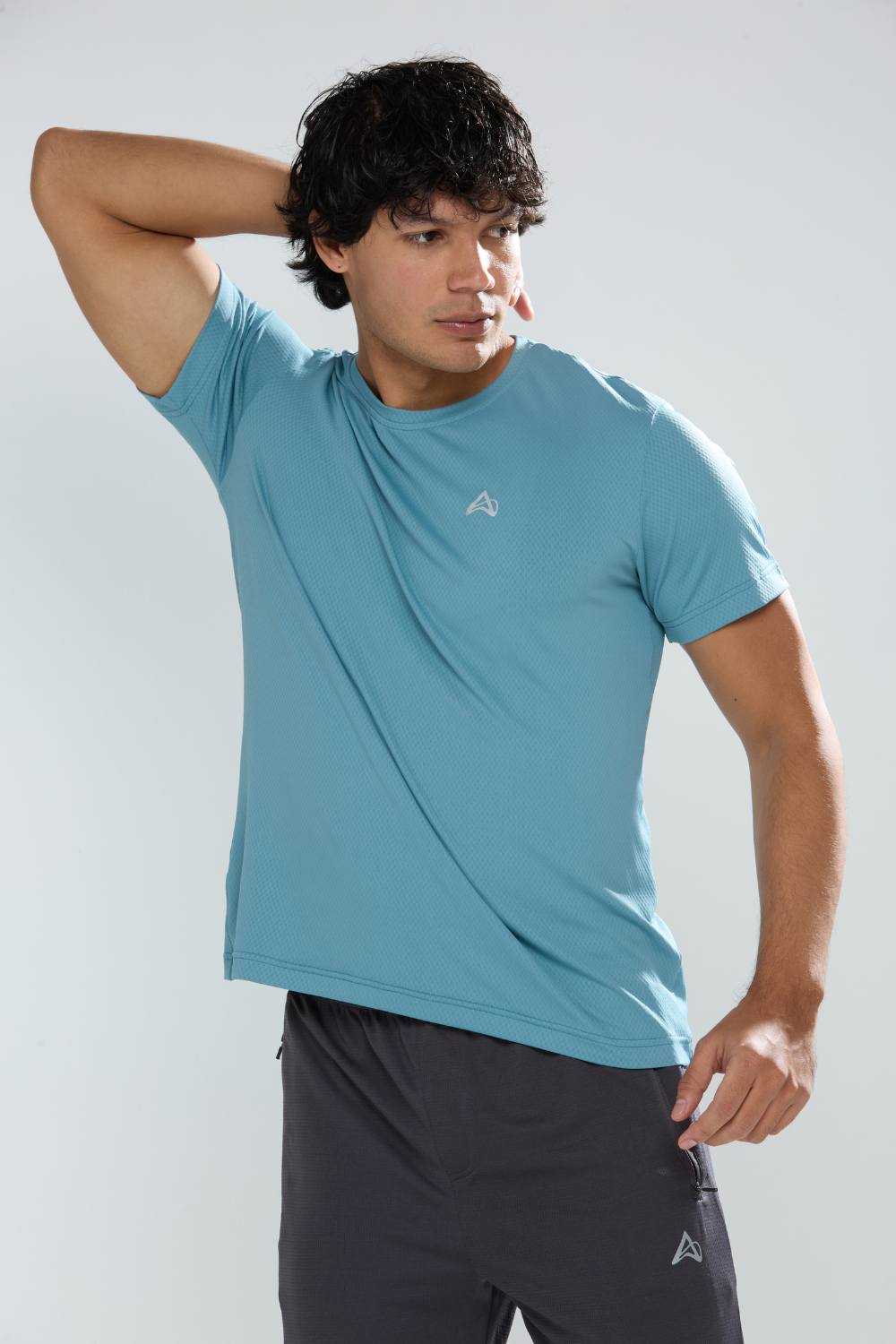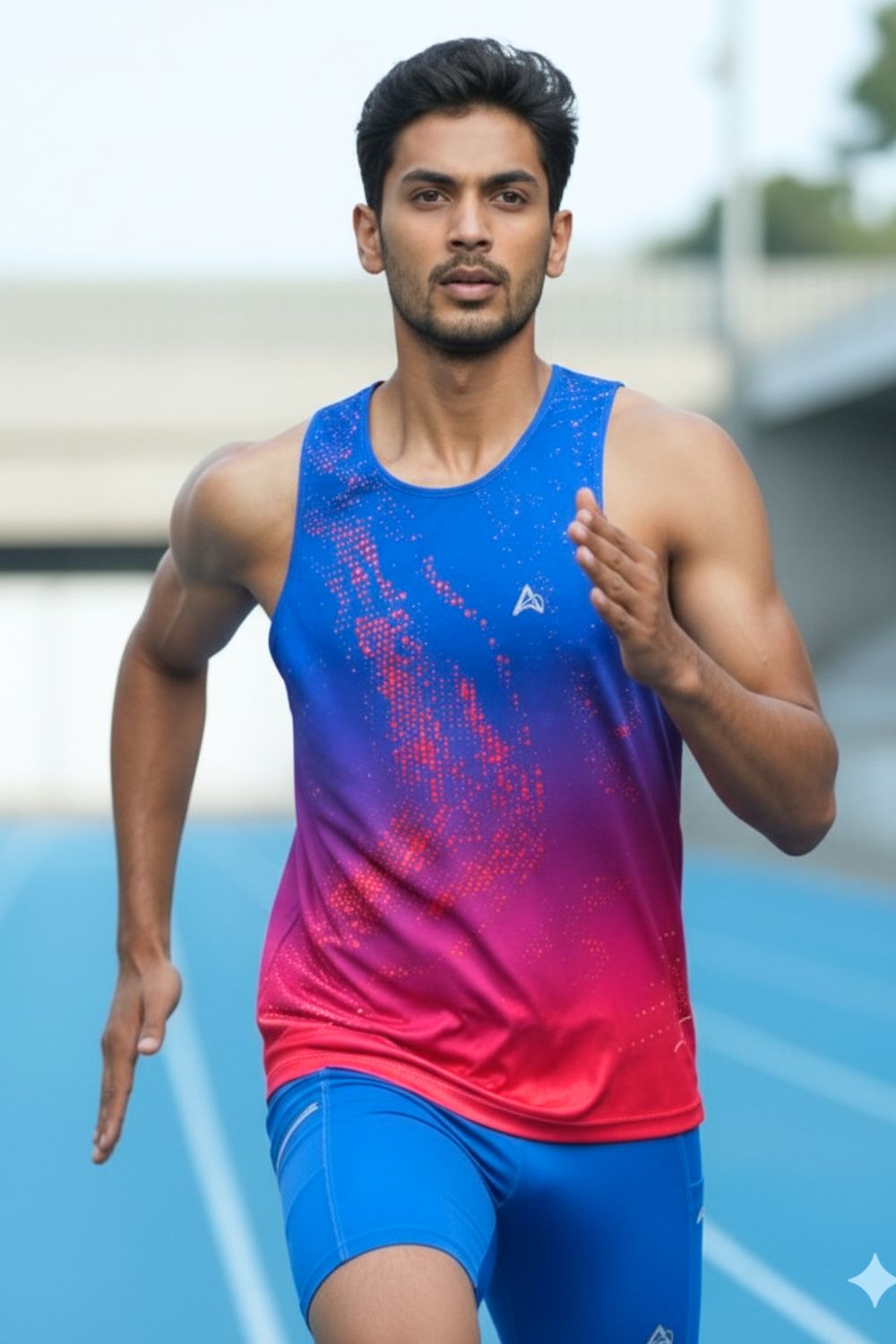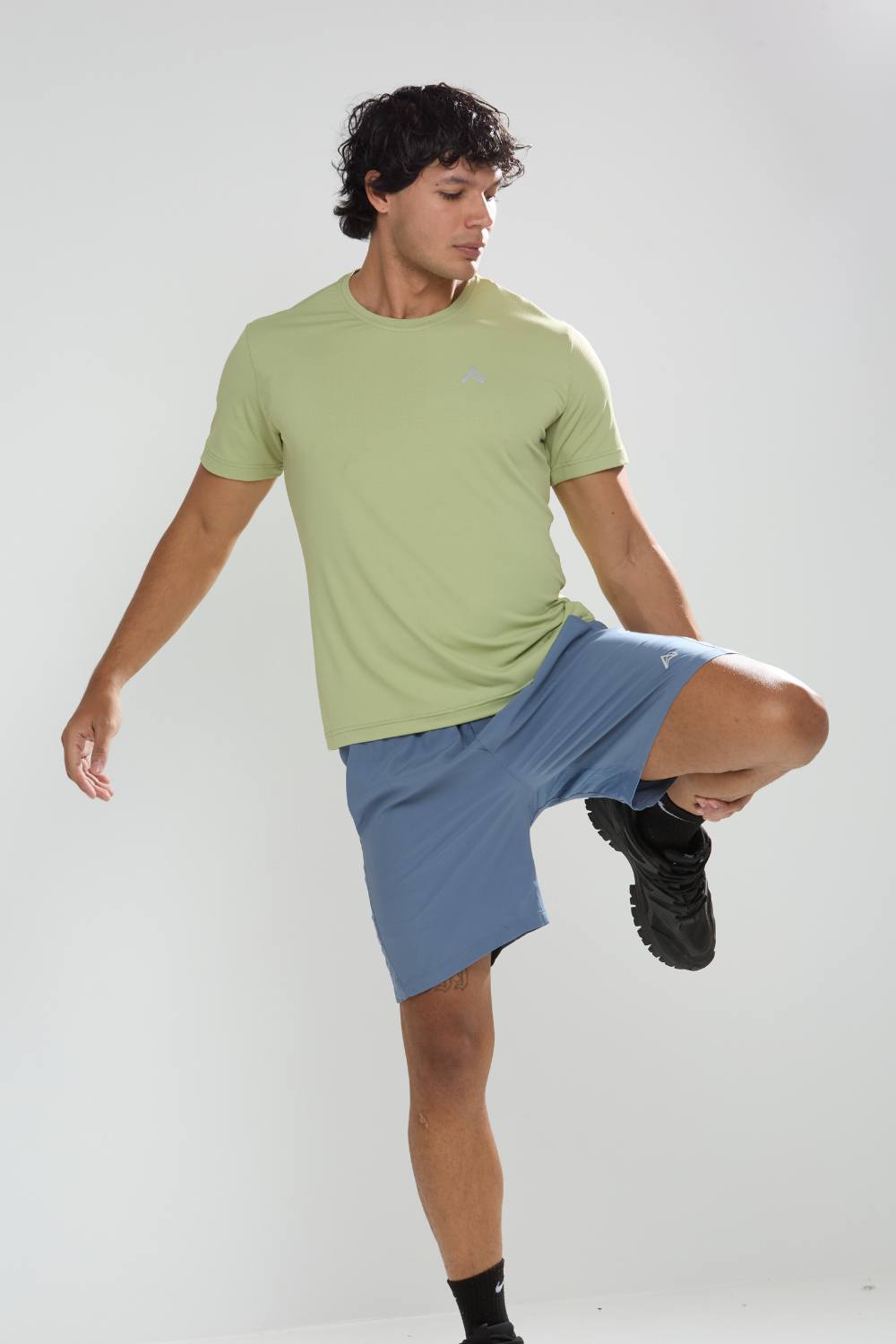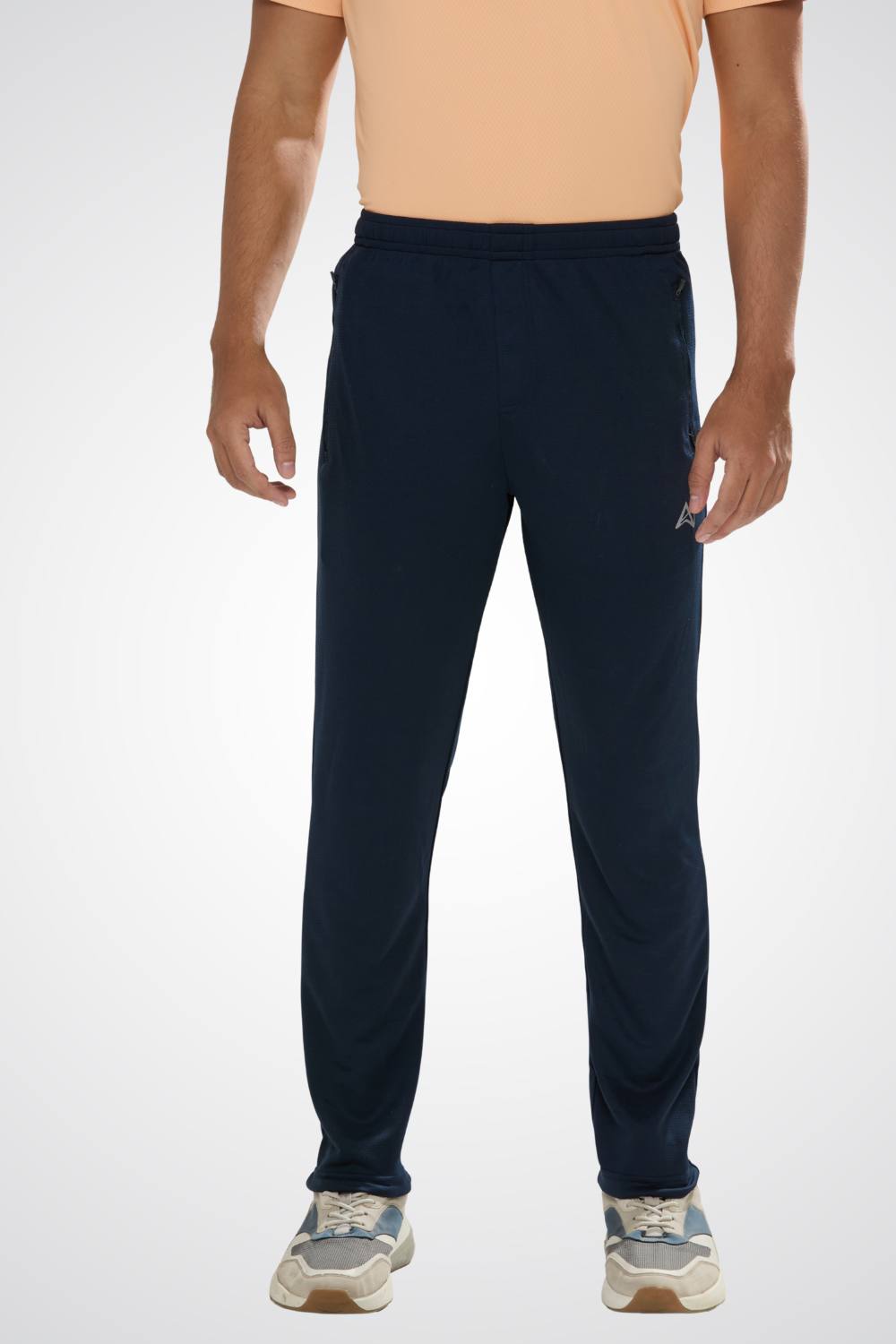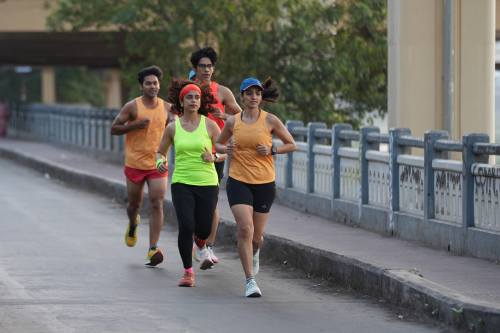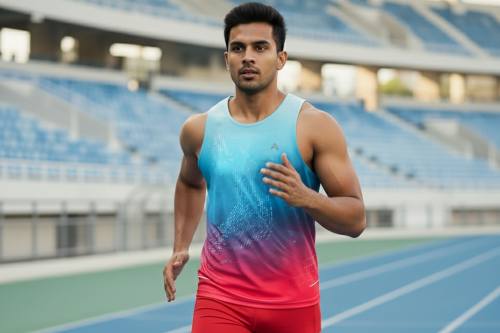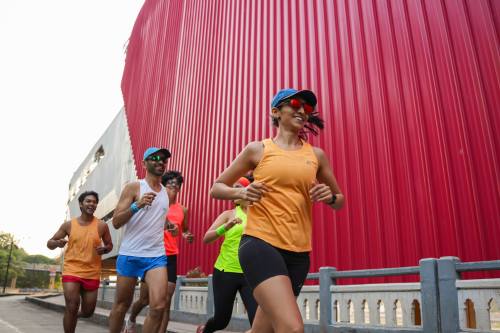Quick Listen:
In the dim predawn haze of Bengaluru's Cubbon Park, as the city's skyline begins to stir, a symphony of determination echoes through the trees. Footfalls sync in a steady cadence tech executives shaking off yesterday's deadlines, young professionals chasing personal bests, families reclaiming time from the grind. It's 5 a.m., the air still laced with night's cool embrace, and already hundreds have gathered. This isn't a fleeting fad; it's the pulse of India's urban renaissance, where early-morning runs aren't just exercise they're a defiant claim on time, health, and community in a nation hurtling toward modernity. This ritual is reshaping not only lifestyles but also the India running gear market, propelling it toward unprecedented growth amid rising health consciousness and urban pressures.
Tired of gear that slows you down? Chafing, soggy fabrics, and missing pockets kill your run's momentum. At Aguante, we're runners who get it. Our high-performance activewear features moisture-wicking fabrics, ergonomic designs, and smart storage to keep you focused. Shop Now!
The Dawn of India's Urban Running Culture
Two decades ago, spotting a runner on India's streets was akin to glimpsing a mirage rare, almost mythical. Road running, once confined to stadiums and elite circles, has since erupted into a mass movement, ignited by trailblazing events that captured the collective imagination. The inaugural Mumbai Marathon in 2004, orchestrated by Procam International, marked a watershed, drawing crowds and catalyzing a cascade of races nationwide. Today, the Tata Mumbai Marathon stands as Asia's premier long-distance spectacle, commanding over 45,000 participants each January and ranking among the globe's top ten marathons. This flagship event, the nation's largest mass-participation sports extravaganza, has spawned an ecosystem of roughly 1,000 annual road races, from the Delhi Half Marathon launched in 2005 to the TCS World 10K Bengaluru in 2008 and the Tata Steel Kolkata 25K since 2014. These gatherings have lured international luminaries, etching India firmly onto the world running map.
Yet, the allure of dawn persists for a compelling reason: survival in the urban cauldron. India's megacities grapple with sweltering afternoons that top 100°F in Delhi's summers, snarled traffic that devours hours, and workdays that bleed into evenings. Early mornings offer sanctuary a window of tolerable temperatures, quieter avenues, and uninterrupted focus. For the average urbanite, it's the only slot to weave fitness into an otherwise relentless schedule. This temporal pivot carries profound implications for the performance apparel sector. Manufacturers must now engineer products resilient to India's capricious weather: fabrics that wick away monsoon humidity, silhouettes that accommodate diverse body types, and features attuned to low-visibility starts. As urbanization accelerates and disposable incomes swell, the demand for such specialized gear surges, underscoring running's evolution from hobby to necessity.
A Surge in Early-Morning Momentum
Beyond mere logistics, this dawn patrol embodies a profound cultural metamorphosis. Across metros like Mumbai and Bengaluru, running clubs convene religiously between 5 and 6 a.m., evolving into vibrant social anchors. These collectives think Bengaluru's Jayanagar Jaguars or Delhi's Runnaholics transcend athletics, forging bonds over shared sweat and stories. No longer bastions for professionals alone, they welcome a tapestry of participants: corporate climbers logging miles before boardrooms, parents carving out pre-school rituals, and seniors rediscovering vitality. In 2025, this inclusivity has amplified, with Gen Z leading the charge through trendy run clubs that blend fitness with fashion and fellowship. These groups prioritize endurance alongside socializing, turning solitary jogs into communal adventures that resonate in a hyper-connected era.
Digital innovation amplifies this momentum. Platforms like Strava and MapMyRun pulse with dawn dispatches, mapping routes from misty parks to seaside promenades. Wearables have democratized tracking, with smartwatches and fitness monitors becoming indispensable. The sector's vitality is evident: valued at USD 2.4 billion in 2024, the running gear market encompassing footwear, apparel, accessories, and trackers eyes USD 4.8 billion by 2033, charting a robust 7.71% CAGR from 2025 onward. This trajectory owes much to heightened health vigilance, burgeoning fitness engagement, urban sprawl, income expansion, recreational running's appeal, marathon proliferation, athlete endorsements, and e-commerce's ascent. Regionally, South India leads, buoyed by tech hubs; product-wise, footwear dominates, while gender segments span male, female, and unisex lines. Distribution channels diversify across specialty shops, supermarkets, online portals, and more, ensuring accessibility in a market segmented by North, West-Central, South, and East India.
Women's participation marks the most transformative arc. Historically sparse limited to pros in sparse races female runners now flood the field, dismantling barriers amid the post-2000s marathon surge. As chronicled in an AIMS World Running analysis, Indian women are progressively defying societal constraints to claim road running, a surge synced with the distance revolution sparked by Mumbai's 2004 triumph.This empowerment wave, from Pune's 1983 origins to today's global draws, has ignited apparel tailored for equity: breathable unisex tanks, terrain-adaptive shoes, and inclusive sizing that honors diverse forms. In May 2025, Nike's After Dark Tour in Mumbai drew over 3,000 women for evening runs, symbolizing a broader push for freedom and solidarity beyond dawn hours. Events like the World Women's Day Run and Six Yard Run further galvanize this shift, blending fitness with advocacy for safety and empowerment.
Real-World Runners, Real-World Impact
Envision Delhi's Lodhi Gardens at 6 a.m.: a kaleidoscope of motion as runners thread through verdant lawns, neon accents flashing against the rising sun. Shift to Mumbai's Marine Drive, where dawn joggers weave past nascent vendors, pulses synced to app alerts. These locales transcend scenery; they're crucibles of change. Bengaluru's Cubbon Park balloons with weekend throngs, while Chennai's Besant Nagar Beach morphs sunrise trots into seaside soirees. In Pune, early risers savor 10K circuits amid whispering streets, the crisp air a prelude to the day's bustle. Chennai veterans kick off at 4 a.m. atop flyovers, embodying the grit that defines this culture.
Industry titans are attuned. Domestic players like Wildcraft innovate with monsoon-repellent weaves, while internationals Nike, Puma deploy dawn-optimized armbands and grippy soles for pockmarked paths. Decathlon's value-driven durability courts the aspirational middle class, its affordability stoking the 7.71% CAGR amid rising incomes. Athlete voices, from marathon stalwart OP Jaisha to sprinter Dutee Chand, amplify brand trust, carving niches in the USD 2.4 billion arena. Homegrown gear is finally matching the boom's pace, with local innovators crafting sustainable, culturally resonant options that rival globals. Fashion-forward clubs elevate this, morphing runs into style statements where post-jog brunches seal the social pact.
Recent X posts capture this vibrancy: a September 2025 clip from Chennai's patriotic marathon showcases kids cheering early-morning elites, blending family and fervor. Another from a Delhi trail runner celebrates rainy 8K dashes as "morning parties," underscoring running's therapeutic joy. Even logistics firms nod to the rhythm, touting 24/7 freight akin to relentless dawn training.
Challenges in the Early Light
For all its promise, this surge confronts stark realities. Women's safety looms largest: dimly lit alleys and secluded greens evoke unease, prompting calls for integrated safeguards like LED footwear and luminous jackets. Asics and Under Armour respond with visibility-embedded lines, yet gaps endure. Air pollution compounds the peril; Delhi's morning shrouds imperil lungs, spurring anti-smog masks and indoor pivots, though secure venues lag beyond enclaves. The activewear realm spies opportunity here breathable shields against particulates, at prices that democratize defense.
Affordability bites too. Premiums from Adidas or Reebok elude many, widening inequities. Indigenous labels bridge this with quality bargains, but scaling remains key. As runs proliferate, so must adaptive, equitable attire vital for sustaining momentum in diverse climates from Delhi's dust to Mumbai's deluges.
Opportunities for Innovation
This dawn-driven surge is a boon for apparel architects. Visibility isn't optional; it's imperative for twilight navigators. Monsoon-tuned hydration vests, gadget-synced bands, and featherweight shells outsell staples. E-commerce's boom, per IMARC insights, democratizes reach, pairing digital shelves with brick-and-mortar staples.Online channels thrive, fueled by urbanite's seamless hunts. Community races from grassroots 5Ks to Kolkata's 25K ignite branded fervor; participants crave performative tees, plush cushions, and selfie-ready aesthetics.
Local ingenuity shines: vivid palettes, modest drapes, and terrain-tuned fits that echo cultural nuances. Run club's ascent signals wellness's permanence, post-COVID catalysts ensuring urban Indian's fitness fealty. The Mumbai Marathon's January 2025 edition further amplified appeal, with early runs unveiling citie's souls amid waking streets. Global Running Day underscored mental perks neuroplasticity boosts, BDNF surges cementing running's holistic halo.
A Bright Future for India's Runners
As auroras crest India's horizons, the running ethos gleams with potential. Experts foresee dawn devotion enduring, entwined with urban ethos. For apparel, the mandate rings clear: pioneer or perish. Firms championing security, economy, and climatic savvy will ensnare the burgeoning cohort. By 2033, the market doubles, propelled by awareness, sprawl, and finish-line euphoria rephrased from IMARC's verified forecast, this growth mirrors a populace prioritizing vitality.
From solitary Lodhi laps to Mumbai masses, dawn sentinels redefine exertion. Their strides propel not just bodies, but a sector and society toward resilient tomorrows. In this marathon of modernity, the early bird doesn't just catch the worm it outfits the flock for the long haul.
Frequently Asked Questions
Why do most runners in Indian cities prefer early morning runs?
Urban runners in India choose early morning hours (5-6 AM) primarily to escape extreme weather conditions, heavy traffic, and packed schedules. Morning temperatures are more tolerable compared to afternoons that can exceed 100°F, streets are quieter with less pollution, and it's often the only time slot available before demanding work schedules begin. This timing also provides better air quality and safer running conditions in India's bustling metropolitan areas.
How big is India's running gear market and what's driving its growth?
India's running gear market was valued at USD 2.4 billion in 2024 and is projected to reach USD 4.8 billion by 2033, growing at a 7.71% CAGR. The growth is driven by increased health consciousness, urbanization, rising disposable incomes, the popularity of marathon events like the Tata Mumbai Marathon, and the emergence of social running clubs. Women's participation has particularly surged, creating demand for inclusive, weather-appropriate athletic wear designed for India's diverse climate conditions.
What safety challenges do early morning runners face in Indian cities?
Early morning runners in India face significant safety concerns including poor visibility in dimly lit areas, air pollution (especially in cities like Delhi), and safety issues for women runners in secluded areas. To address these challenges, athletic brands are developing visibility-enhanced gear with LED elements, anti-pollution masks, and reflective clothing. Many runners also join organized running clubs for safety in numbers and choose well-lit, populated routes in parks like Cubbon Park in Bengaluru or Lodhi Gardens in Delhi.
Disclaimer: The above helpful resources content contains personal opinions and experiences. The information provided is for general knowledge and does not constitute professional advice.
You may also be interested in: Why Indian Marathoners Prefer Lightweight Running Gear
Tired of gear that slows you down? Chafing, soggy fabrics, and missing pockets kill your run's momentum. At Aguante, we're runners who get it. Our high-performance activewear features moisture-wicking fabrics, ergonomic designs, and smart storage to keep you focused. Shop Now!
Powered by flareAI.co





